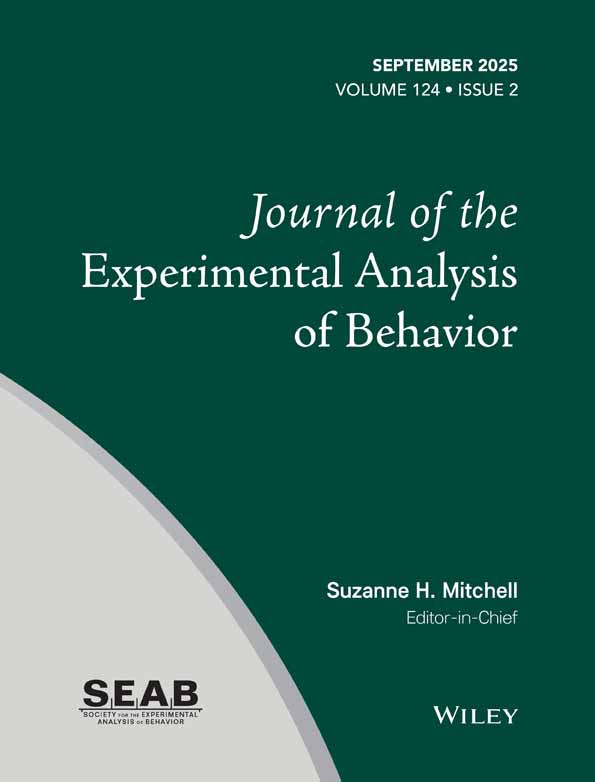EXTINCTION OF SIDMAN AVOIDANCE BEHAVIOR1
This paper is based on a dissertation submitted to the Graduate School of Arts and Sciences of Boston University in partial fulfillment of the requirements for the Ph.D. degree. The author wishes to thank Prof. L. J. Reyna, Boston University, for his extensive guidance and assistance, and Dr. David Shapiro, Harvard Medical School, for his suggestions in the preparation of this manuscript. The research was conducted, in part, during the author's tenure as a National Science Foundation Predoctoral Fellow.
Abstract
Extinction of Sidman avoidance behavior by eliminating the noxious stimulus was studied in Sprague-Dawley rats with bar-pressing as the response. Each of three subjects was trained and extinguished on each of the following schedules in a different order: nondiscriminated, response-shock interval = 20 sec, shock-shock interval = 5 sec; nondiscriminated, response-shock interval = 40 sec, shock-shock interval = 5 sec; discriminated, response-white noise interval = 15 sec, noise-shock interval = 5 sec, shock-shock interval = 5 sec. Less than one 4-hr session was required for extinction for all procedures. When a warning stimulus was present, resistance to extinction increased. Subjects did not, however, respond to avoid the signal. Only small differences in extinction were found after training on different schedules with no warning signal.




